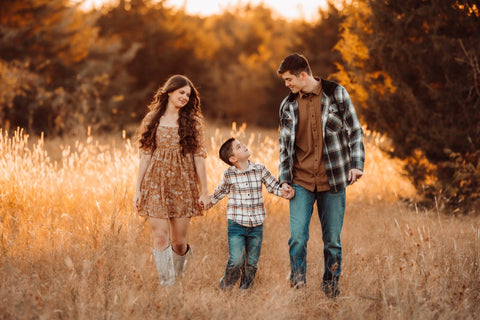- Lightroom Presets
- Mobile Presets
-
Photoshop
-
Learn
-
Support
-
Install
- Best Sellers
- Blog
By Anna Gay on | No Comments

When we think of the Levels panel in Photoshop, the tendency might be to only think of highlights, midtones and shadows, but the Levels panel lets you dive into some seriously fine-tuned color management and adjustment tools, as well.
In this tutorial, we will take a more advanced look at the Photoshop Levels Panel in terms of its color correction capabilities. This tutorial requires a basic knowledge of the Layers panel in RGB mode, as well as histograms.
While the RGB channel controls all three color channels - red, green and blue - and is the default channel when we open the Layers panel, we can also look at each individual channel, which allows for a more fine-tuned edit than the Color Balance panel.
Once you have created a Levels Adjustment Layer, open the drop-down menu and select the Red channel:

The slider on the far right (which would normally represent the white point) represents the red point, and the slider on the left (normally the black point) now represents the cyan point:

The same concept applies in the Green channel, which affects green and magenta:

And in the blue channel, which affects blue and yellow:

To begin editing the color in this image, in my first Levels adjustment layer, I am working in the Red channel.
By moving my black/cyan point to the right, I am adding a cool tone to the shadows of the image:

I would like to bring some magenta to her skin tone to cancel out the green cast that the previous adjustment caused. Since her skin is in the midtones range, I am moving my mid point slider to the right:

Finally, in the Blue channel, I would like to bring a bit more warmth to her skin without it becoming too intense (which is why I am not adding warmth in the Red channel). Adding a touch of yellow in the midtones of the Blue channel is a much more subtle approach than working in the Red channel, which, by nature is an inherently warm channel.
Since I am adding a cool tone to this image, my final step is to move the white point slider to the left to add blue to the highlights of the image:

If you are working with several layers of Levels, you may find it useful to name each adjustment layer with how/what you adjusted for quick reference:

Also, grouping the layers (Ctrl + G) will give you the option to reduce the opacity of all of the adjustment layers simultaneously, at the same opacity. This worked out very well here, because I found that I preferred the edit somewhere between the original and my final color adjustments, so I reduced the opacity of the group to 68%:

Below is my final color adusted edit and as well as the original image.

Do you have any questions or comments about Using Photoshop Levels for Color Adjustments? Leave us a comment below - we would LOVE to hear from you! And PLEASE SHARE our tutorial using the social sharing buttons (we really appreciate it)!




Anna Gay is a portrait photographer based in Athens, GA and the author of the dPS ebook The Art of Self-Portraiture. She also designs actions and textures for Photoshop. When she is not shooting or writing, she enjoys spending time with her husband, and their two cats, Elphie and Fat Cat.

Comments